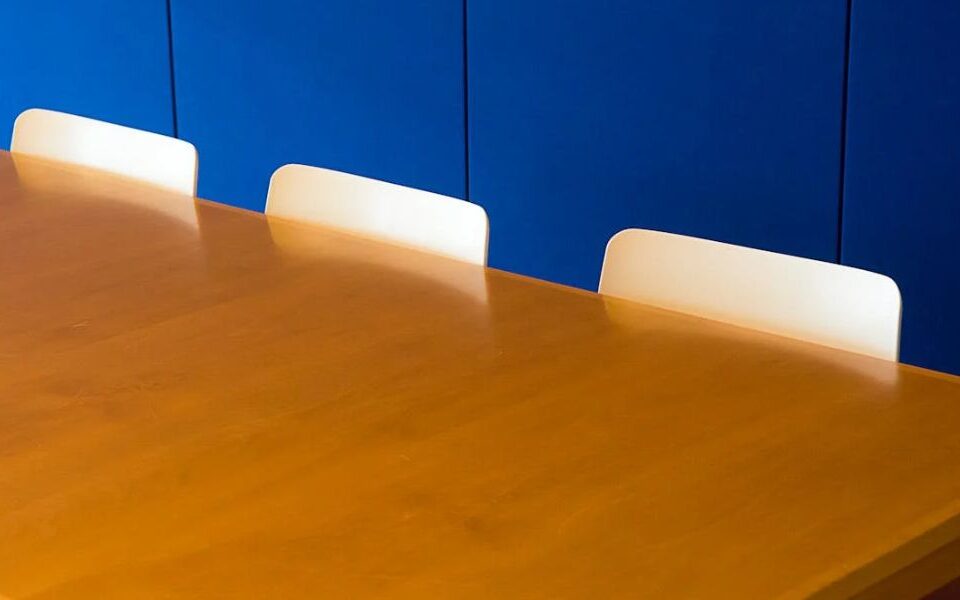- Have any questions?
- 888-432-8878
- steve@sebackground.com
HR Business Partner, VP – BRS & Corporate Strategy – BlackRock – New York, NY
May 28, 2017Burners Turn Earners: Turning Unused Real Estate Spaces into Workspaces
May 29, 2017Why Office Interior Should Be Tailored To Suit the Employee Personalities
In the late 1970s and early 1980s, business sections of newspapers and magazines described the intrinsic work arrangements of Silicon Valley with quenchless curiosity and buoyant enthusiasm. Darlings like Intel served as the chief example of the ‘draconian’ Patagonia. The company had no time cards, no dress codes, no assigned parking spots, no special cafeterias for executives, above all, no offices, just honeycombed floors. The wall-less subdivision of the office aptly represented share labor, like the communal farmers fine-tuned for solitude AND. Years later, CEO Andrew Grove wrote, “The cubicle may have come to represent the exploitation and unhappiness of white-collar workers, but the idea that those modular walls, those tackboards, actually determined anything was patently false.”
The cubicle wasn’t born as a ‘monolithic insanity’ or even square, for that matter. It was, in fact, as a beautiful vision. The year was 1968. Star Trek aired American television’s first interracial kiss. The Beatles released The White Album. And iconic home-furnishings company Herman Miller in Zeeland, Michigan, launched the Action Office that would change the workplace forever. It was the brainchild of Robert Propst, who was amongst the first designers to borrow the European idea of Bürolandschaft, or “office landscape” – privacy screens and office plants, without cutting off from the atmosphere of the room.
Inventions never obey the creator’s intent, do they?
Like Mikhail Kalashnikov who came to regret inventing the AK-47, Propst came to lament his invention. The sea of cube farms has become the zeitgeist of prairie dogging, meerkatting, and a humdrummery hellhole inhibiting teamwork.
Sociologist C. Wright Mills, in his 1951 attack on corporate bureaucracy, White Collar, used the term an “enormous file” to describe those soulless offices. Mill’s book was joined by The Organization Man and The Man in the Gray Flannel Suit in a series of attempts to assess the damage office life inflicted upon the worker.
Beginning in the late 1960s, the cubicle spread quickly across the American white-collar landscape. According to Steelcase, one of the largest office furniture company, nearly 70 percent of office work now happens in cubicles. Companies have been trying for decades to find the balance between public and private workspace that best supports collaboration. A research found that only 23% of employees wanted more privacy; 50% said they needed more access to other people, and 40% wanted more interaction. Companies responded by shifting their real estate allocation toward open, colorful spaces that support collaboration and shrinking areas for individual work. This is where it gets complicated: Researchers from Steelcase now suggest that people feel a pressing need for more privacy, not only to do work but to cope with the intensity of how work happens today.
Silicon Valley Bank, based in Santa Clara, Calif is one such company which abandoned the open-office plan. It began working with Fennie + Mehl to add more private spaces, including “phone booths” that can seat one or two people, “huddle” rooms for small meetings, giving in to employee complaints about limited space for confidential conversations and informal meeting spaces. Silicon Valley Bank has also doubled the number of chairs per employee, adhering a two-to-one ratio used by office designs that give employees more choices of where and how to work. The bank is now receiving “positive feedback” from employees, says Tom Suro, the director of real estate workplace services in Silicon Valley Bank.
Healthcare Source HR Inc., a software provider in Woburn, Mass., hired Leslie Saul & Associates to design an open-floor plan when it moved office in 2014. Instead of cubicles, the new space has soundproof glass cabanas. This conjures more space for workers looking for solitude while retaining the feel of the luminous space.
HarperCollins, a unit of News Corp., worked with Haworth on its office plans to give office senior editors and executives for the many one-on-one meetings. Employees in creative roles have workstations set up in a pinwheel style, to allow collaboration and privacy.
According to David Lehrer, a researcher at the Center for the Built Environment at the University of California, Berkeley, “companies are not providing sufficient variety in spaces.” Apple co-founder Steve Wozniak got the initial inspiration to build a prototype computer from a chance meeting with others. The story reveals that workplace design shouldn’t be simplified as a binary choice of open versus closed offices.
Today’s office designs represent a continuum of open to closed designs. Lindsay Graham, a social psychologist and research specialist at Center for the Built Environment at the University of California Berkeley, personality traits are likely to influence “person-environment fit.” A 2014 study from the University of Berkeley found that factors related to personality and types of work are interwoven with the complexities of workplace design. Extroverts are fueled by social interaction, and introverts are drained from social interactions.
Tailoring office spaces to suit personalities is a largely unexplored territory. Renowned psychologist John Holland developed the Holland Codes, a theory that matches career choices based upon personality types. Artistic (Creators), Convention (Organizers), Enterprising (Persuaders), Investigative (Thinkers), Realistic (Doers), and Social (Helpers).
For example, the Artistic often feel stifled in a cubicle environment; the Realistic feel more focused; while the investigative types feel encouraged in an open-office workplace. Writers, engineers, designers, programmers and thinkers are the Holland Investigative types are more at ease in an open-office set up that encourages collaboration and communication among co-workers.
For Holland’s Enterprising and Realistic, the traditional workplace – cubicles – offer an organized, quiet, and contained environment that allows getting tasks done while maintaining proximity to the team members on a daily basis. These are management consultants, lawyers, and human resources specialists.
The U.S. General Services Administration, which provides workplace for over a million federal workers, is now exploring ways to make workspaces better suited for specific missions of tenant organizations. Kevin Kelly, senior architect with GSA’s Total Workplace program, feels the open office plan has been a result of a one-size-fits-all mentality.
The modern workplace is no longer a monoculture of cubicles or an open-office plan. It offers a greater autonomy of choice in the workplace to match one’s personality type, what they are doing and how they’re doing it.
The post Why Office Interior Should Be Tailored To Suit the Employee Personalities appeared first on The HR Digest.
Source: New feed



